If there was any question that bees are truly wild animals, then their ability to up and exit without leaving a forwarding address should settle that. Bees are definitely good at absconding.
Absconding is when the queen and all her loyal subjects clean out the stores and migrate to a new home. This shouldn’t be confused with swarming.
Swarming vs. Absconding
In the beekeeping community, it is common knowledge that swarming is not the same as absconding. But new beekeepers may easily confuse the two.

Here are the differences between swarming and absconding.
In swarming, one colony becomes two when the old queen takes some (approximately 40-70%) of the workers and begins a new colony at a different location.
Swarming is the reproductive process of colonies. It happens when the honey bee colony is overpopulated and needs to reproduce. In this case, the queen bee, along with some of the worker bees, leaves the hive. Scout bees would go around looking for a suitable to establish their new hive. Once a hive location is found, the honey bee colony swarms to the location and establishes a new hive.
The remaining bees in the original hive are left with a few workers and some brood. All the bees left in the hive would work together in brood rearing. They would also be charged with raising a new replacement queen. At the original hive, a new queen will emerge from one of the queen cells, mate, and begin her royal duties.
On the other hand, absconding occurs when all the honey bees leave the bee hive for some reason.
Swarming is natural. Absconding is induced.
Now, there are mysteries that the bees like to keep to themselves, and this may be one of them.
Though we may not know all the reasons honey bees go AWOL, we have managed to spot some clues.
4 Common Reasons Why Bees Are Always Absconding and Leaving the Hive
1. They Didn’t Like the Crown Moldings
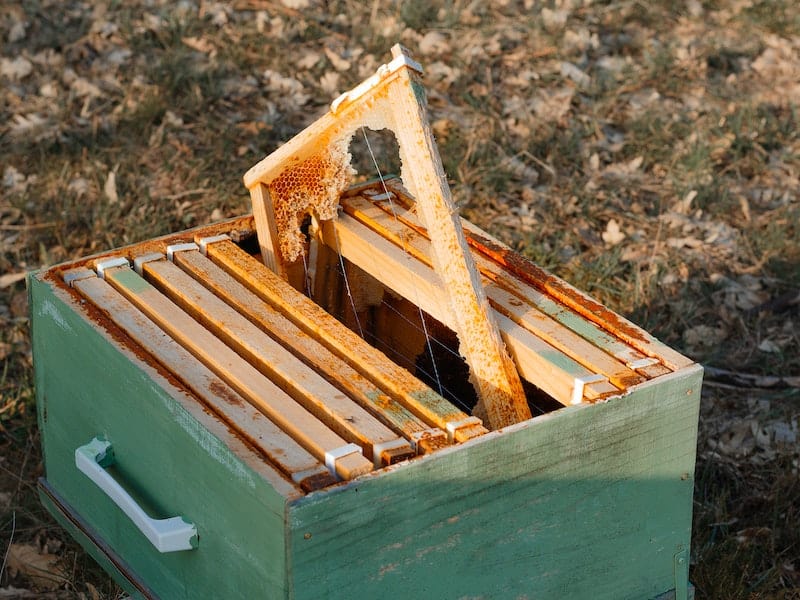
Bees are quite free-spirited. You can coax them to do your bidding, but you can’t force them.
When you capture a swarm and put them in a hive box, it doesn’t guarantee that it will stay.
They’re probably keeping their options open.
In actuality, the scouts begin searching for and looking at real estate options even as you move them into your trendiest bit of lumber in your side of the state. So, you may do everything right.
You will retire in the evening, having patted yourself on the back for a job well done.
Then, when you decide to pay your new tenants a visit the next day, you find your hive empty. This could also happen with package bees.
Sometimes the new smell puts them off. Bees have been known to prefer old hives to new ones.
That “new car smell” does nothing for honey bees. Actually, it would seem that it repels them. They like the tried and tested structures.
If they move into a hive with some old brood comb, they settle. It’s almost like they are picking up where they left off at their previous home.
2. Lack of food
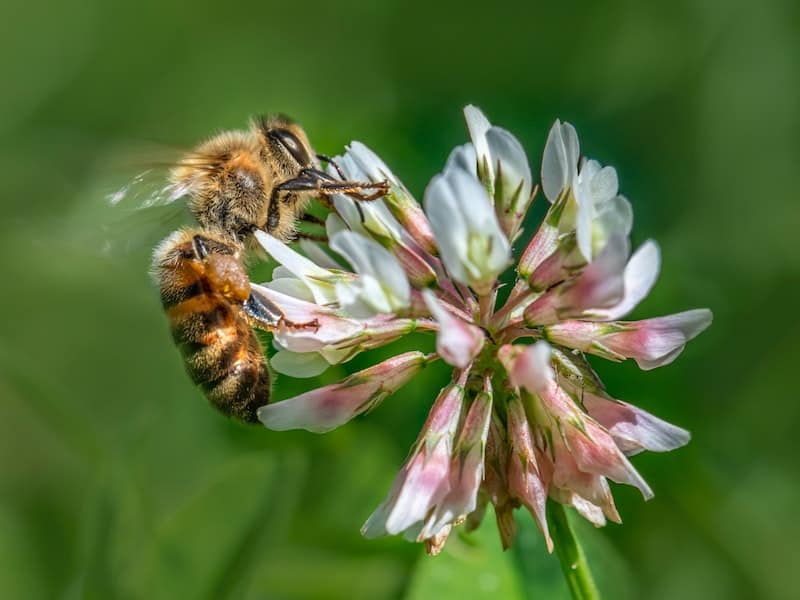
Have you heard of the term “hangry”? That’s when you’re hungry and angry.
As you can imagine, these two sensations can come together and lead to some pretty explosive behavior. For bees, it’s time for a major change.
A lot of beekeepers notice that their bees abscond in the fall. One of the reasons could be that there simply isn’t enough food for them.
If you harvest a good portion of honey and the fall blooms don’t deliver for whatever reason, the bees are going to find themselves in a precarious situation.
They could stay and starve or take their chances and find a better nesting site that’s closer to a food source.
Don’t be surprised if you have absconding bees during a nectar dearth,
This is not an impulsive decision for them. If they decide to leave the nest, then they have to prepare.
The queen has to stop laying eggs so that she can get back her flight figure.
They also clean out their stores and may leave a few members behind, but it would be just a handful of recently emerged bees who haven’t had their flight lessons.
You may also find a little brood as well, but not much.
Unfortunately, there are no guarantees of survival once they leave, so they are at the mercy of mother nature, and she can be cruel.
3. Pests and Harassment
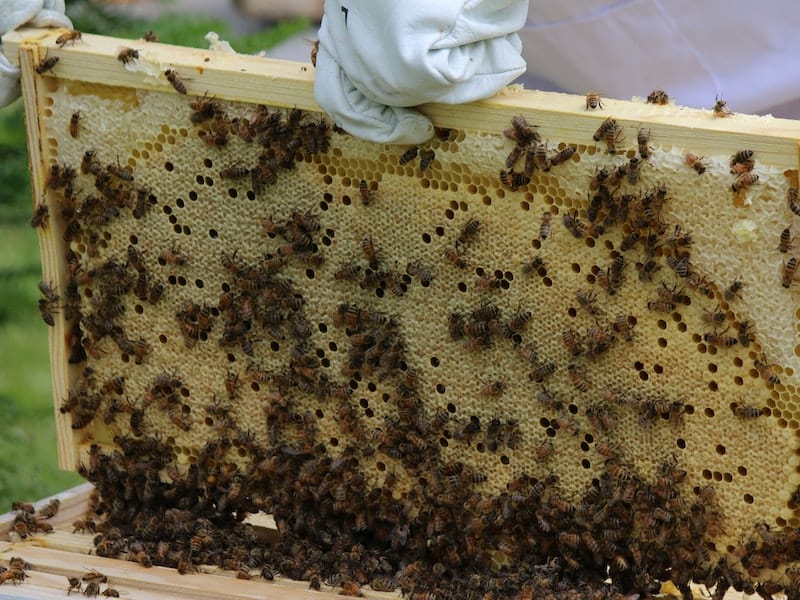
Home invaders can be very stressful to the bees.
Ants raid the hive to enjoy the honey stores and sometimes feed on bee larvae as a source of protein. Bees are a target because they are so enterprising.
Yellowjackets can also be violent culprits. It’s not enough that they rob the hive and kill the young bees. They also fight and kill the adults.
Then you have the sneaky invaders. These are the small hive beetle and the wax moth.
Now, a healthy and vibrant colony will be able to expel these trespassers.
Unfortunately, if you have weak hives plagued by disease, a failing queen, or when some of your bees swarmed, then the invaders can do a lot of damage.
If they overwhelm the entire colony, the bees may choose to beat a hasty retreat and take their chances elsewhere.
We also have mammal invaders. That includes the skunks and even you.
Yes, your constant visits every few days can be very stressful to the bees.
Skunks can cause agitation by consistently scratching the hive, trying to find a way to the bee larvae.
Your enthusiasm which involves ripping the roof off the hive several times a week will cause a feeling of insecurity.
We can’t talk about invaders and pests without mentioning the Varroa Destructor mite.
Now this one is tricky because the collapse of a colony due to Varroa mites can be confused with absconding.
This is because the varroa mite-to-bee ratio can be overwhelming for the bees in the fall. Collapse can happen in a matter of a few weeks. This means that you can lose the colony between regular hive inspections.
The colony absconds before they get eliminated by these pests. Better fly away before they turn into dead bees.
4. Environment
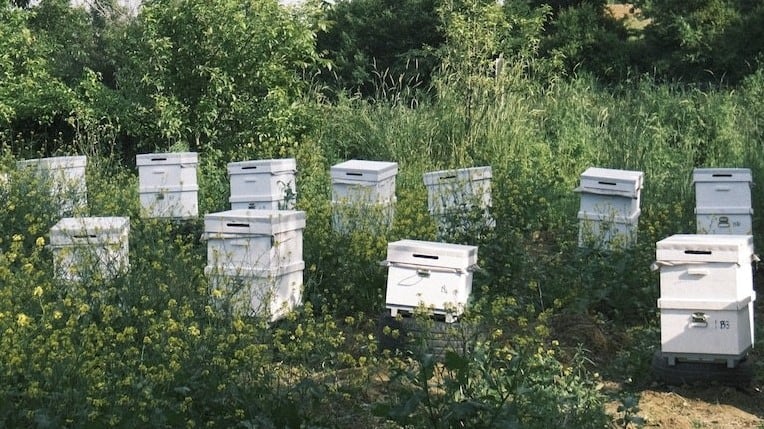
Drastic changes in the immediate environment of the bee yard could also cause bee colonies to leave the hive.
Sometimes, you choose a perfect site to set up your hive. Unless you are a commercial beekeeper, you may opt to put up your hive on someone else’s land.
If they choose to change the landscape around the hive, then your hive could lose its appeal.
Perhaps you had set it up so that the shadows of the trees provide the bees with some protection from the afternoon sun.
If they choose to cut down those trees, the hive would be exposed to temperatures that the bees didn’t sign up for.
If the colony is small, it will be very difficult for them to keep the hive cool in the summer.
That could contribute to their decision to abscond. Is the area around the hive well-drained, or does it get very humid?
That, too, could cause the bees a great deal of discomfort.
How to Prevent Absconding of Bees
In order to prevent bees from absconding, it is important to think like a salesperson.
When you wander into a store willing but not fully convinced that you will actually buy a product and then end up leaving with it 10 minutes later, it’s usually due to good salesmanship.
It’s exactly the same for bees.
You can’t save them all, mind you, so should they leave, don’t beat yourself up too much. Just try to learn from the experience.
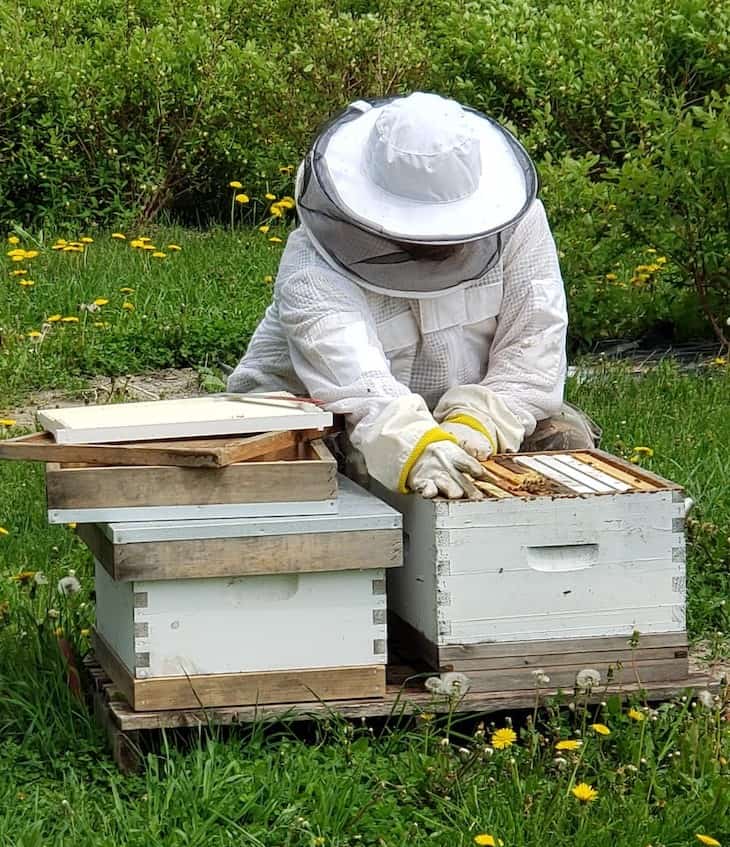
Feed Them
If you have just received your first package of bees, your priority is to feed them enough for them to start building comb.
If they don’t build comb, they have no incentive to stay. To facilitate this, you need to keep the new queen imprisoned until they have built a comb.
If you allow them to release her as usual, then they can all decide to find a new home.
Without her, they are unlikely to leave, so you will have to keep the cork in until the workers have begun construction.
As you do this, keep feeding them until you’re sure that the forage in your area is sufficient.
Your packages could arrive a little earlier than nature can handle, so you have to provide nourishment.
Give Them Brood
If this isn’t your first hive and you have another healthy colony in your apiary, borrow some brood from them.
Bees will not walk out on a homecare job.
Ensure that they have enough food, either from the environment or by providing syrup and pollen patties to help with the care of the brood.
Use a Queen Excluder
Another option is to place a queen excluder between the brood box and the bottom board.
This allows the workers to go in and out of the hive, but the queen shall not pass. Since they won’t leave without her, it will buy you some time.
This is a temporary solution because it also keeps the drones from leaving the hive.
Once the workers have drawn comb and have begun bringing in pollen, then it’s safe to remove the queen excluder.
Use Old Brood Comb for Installing Packaged Bees
If you can get your hands on some old dark brood comb, that can be another option for you.
I don’t know what stories the comb tells, but it seems to keep the bees’ wandering urges at bay.
Getting a drawn frame of it, or placing it on a new frame using a rubber band, can save you some grief.
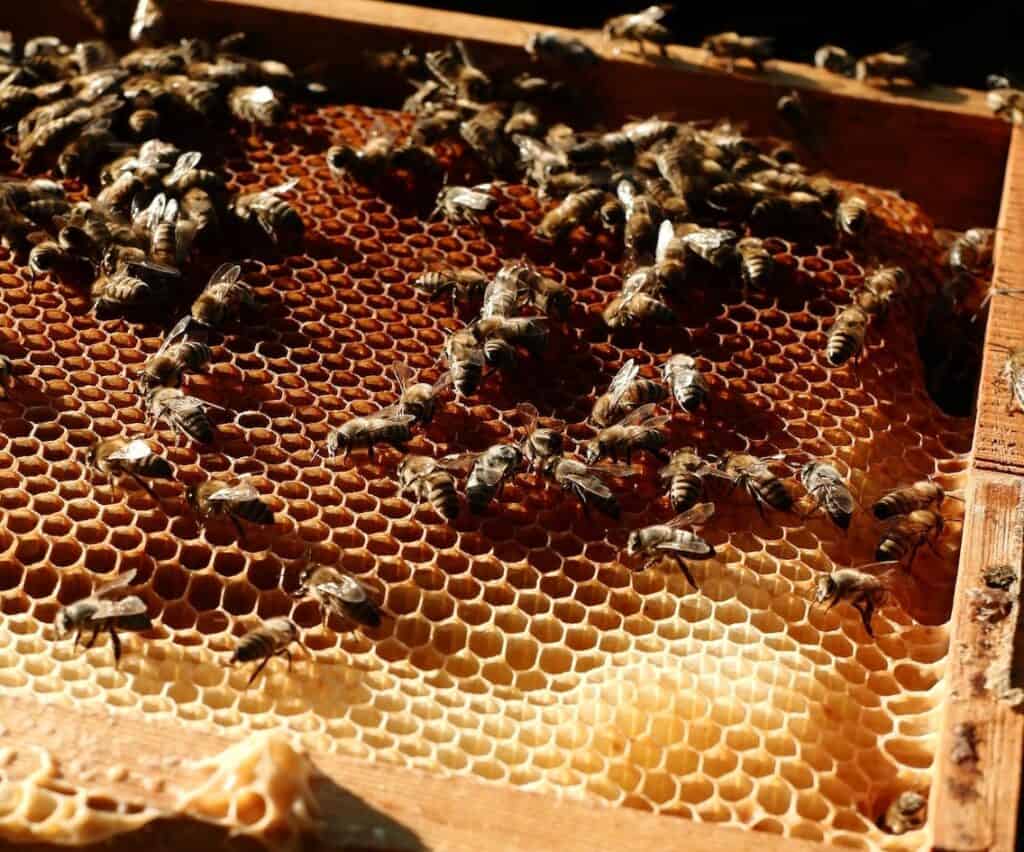
How About a Wax Finish for the Hive Walls
Another option would be to spread a thin layer of wax on the inside of the hive.
We do this with a plastic foundation sometimes to encourage the bees to draw a comb on it.
I think it’s the equivalent of that baked cookie smell that makes a house homier.
Early Diagnosis of Diseases and Infestation
If the problem has been caused by pests, then this is likely to be a painful lesson.
What works best is preventing the invasion in the first place.
When you get your next colony, use entrance reducers to help the guard bees inspect all patrons seeking admission.
The smaller the area they have to guard, the more successful they are at it. This works for invaders like yellow jackets.
For wax moths and small hive beetles, you need to diagnose what is weakening the hive in the first place that prevents them from keeping these invaders away.
If the colony is healthy and vibrant, they are quite capable of taking care of these guys themselves.
A screened bottom board with a varroa drawer can also help with the small hive beetle.
If the issue is a disease, usually brought on by a mite infestation, once again, prevention is better than cure.
Remember that even though you should keep an eye on your bees, inspecting the hive every few days can cause them to vacate the premises without so much as a farewell.
What to do When Bees Keep on Absconding
Let’s go through this using best-case and worst-case scenarios.
So, the bees have left the hive. But wait, what’s that spherical buzzing thing in a nearby tree? It’s your colony.
You caught them just in time.
Since we are optimistic, the bee ball isn’t 20 feet in the air. It’s easily accessible, and now you have a second chance to get things right.
The first thing you want to do is capture the swarm.
Once you get it into a nuc or the old hive, you need to find the queen and put her in a cage. Why?
If you don’t, there’s no reason for them not to try to leave again. Since they won’t leave without her, keeping her in a cage buys you some time.
If the issue was food, then you need to load up on syrup.
If the issue was the environment, you need a new spot to place your beehive.
The area should be well-drained, protected from direct winds that can chill the colony, and safe from big lumbering predators like bears and skunks.
If everything seems okay, then evaluate your beekeeping practices and see if you might be the problem.
If, unfortunately, the swarm is gone and all you have left is an empty hive, it’s time for a full evaluation.
Look at the hive left behind. Is it newly constructed?
If so, you should let it air out a little longer. Bees are not fond of that new timber smell.
If you painted your hives recently, let them dry out a little longer.
It isn’t clear if the objections that the bees have to the smell are due to the smell itself or if it has to do with interfering with pheromone communication in the hive.
Either way, they don’t like it, so you need to respect that.
If the colony was well established, look through the debris left behind. Can you see any mites? Are there signs of other pests or diseases?
The results will help you take proactive measures to keep your bees healthy and happy.
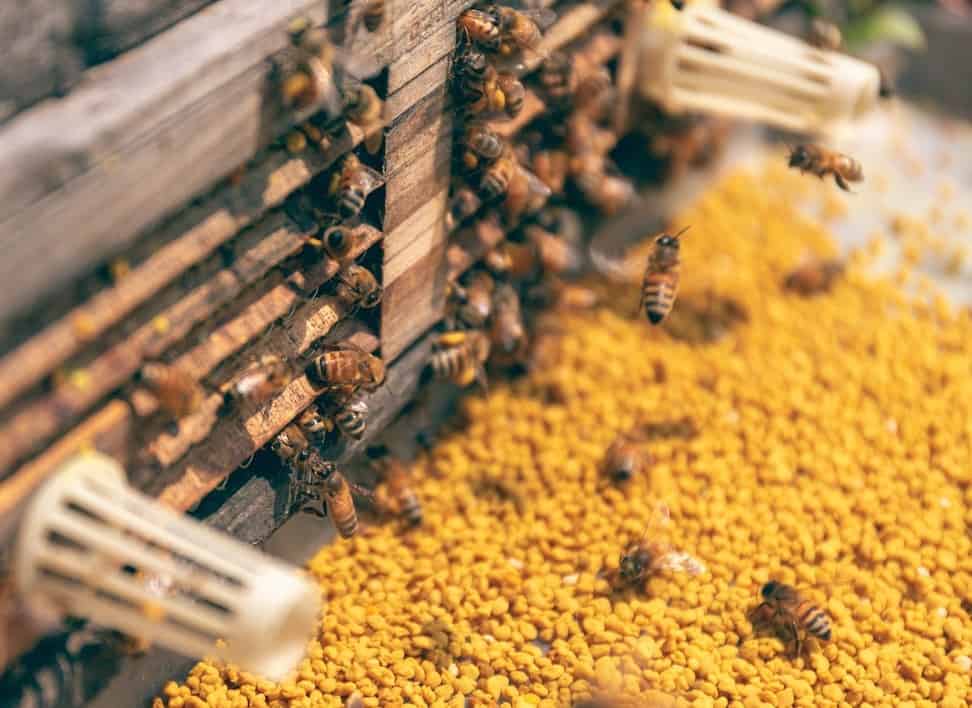
Final Thoughts
They say if you love something, let it go. If it comes back to you, then it’s yours.
Honey bees don’t care at all for that saying.
If you love them, keep them healthy, give them their space, and protect them from their enemies.
If the bees absconded, they wouldn’t come back.
The good news is you can try again with a new colony, but the rules will remain the same.

Today I had a colony abscond and turn around to return to the hive. This is a colony with a three year old, very productive queen. Not tested yet this year for varroa but in past have found zero or one mite with powder sugar roll. I found the queen on the ground in front of the hive…apparently she couldn’t fly and presumably that is why the colony returned. So, sometimes they do return. My concern is that thet will leave again when the heavy construction next to my bee yard cranks up again tomorrow. Is the construction enough to cause a colony to leave?